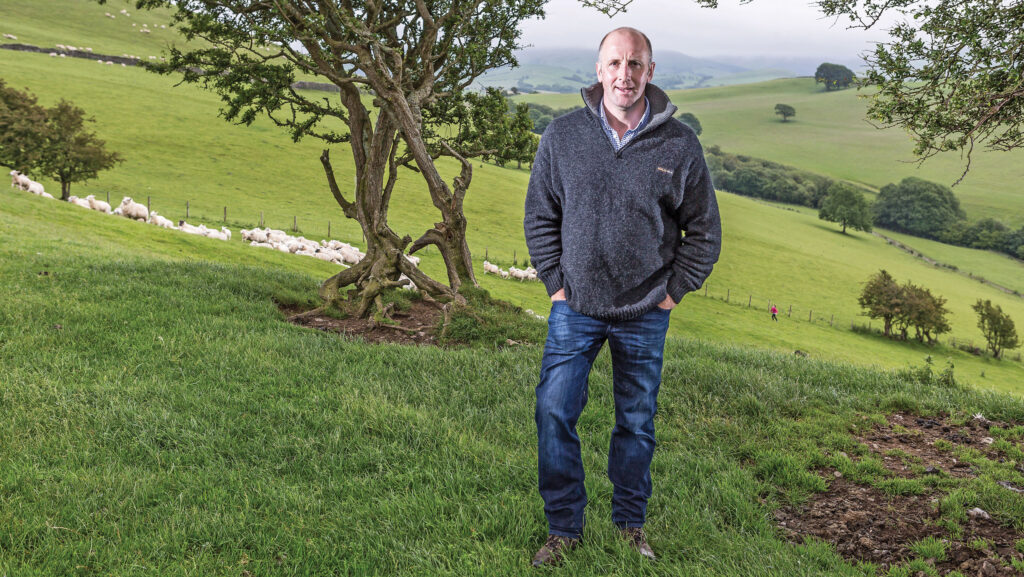Farmer Focus: Dry window for liming and hedgetrimming
 Daffyd Parry Jones © Richard Stanton
Daffyd Parry Jones © Richard Stanton The weather over the past month has been kind. We were able to get the second-cut silage from our reseedings by the end of September, which seemed very unlikely a week or so earlier.
The dry weather in mid-October seemed to be our last chance to get some unfinished jobs done before the rain came to saturate the land.
On a single day we had our local contractor – a father-and-son team with two tractors – doing the hedgecutting, and another father-and-son team with two spreading trailers, spreading 100t of lime.
See also: How rotational hedge management is helping store more carbon
These were fields that we have reseeded over the past two to three years and did not receive lime during reseeding.
They had been soil tested in recent years, and levels were around pH6. They received 3.7t/ha to maintain levels. One field was at pH5.7 and we applied 5t/ha to resolve the matter.
A few trailer loads of lambs and a lorry load of finished cattle have been sent for slaughter during the past few weeks.
Coupled with the Welsh government making their first Basic Payment Scheme payment in mid-October, cashflow will be greatly improved.
Back in the summer, a neighbour of ours offered me 40 small, potted oak trees. We were very pleased, as we had planned this winter to plant trees in fields to create a parkland effect.
The main aim was to provide livestock with shelter and shade in future years, but we also wanted to improve the landscape aesthetics.
However, the awful results of livestock eating acorns this autumn have made us rethink our plans.
Oak trees will now only be planted in fenced woodland, with no access to livestock.
In the areas we‘ve planted over the past 10 years, we opted for a concentration of oak towards the middle of the plantation, rather than putting them on the edges.
We did this to avoid strong horizontal branches overhanging into the fields, damaging tractors cabs while carrying out field work.
Instead, smaller trees like hazel and blackthorn were planted along the woodland boundaries.
I’m glad that this planting plan has been adopted to save us from future problems with acorns as well as big branches.
We’ll have to find another elegant native, but livestock-friendly, tree to plant in our fields.

